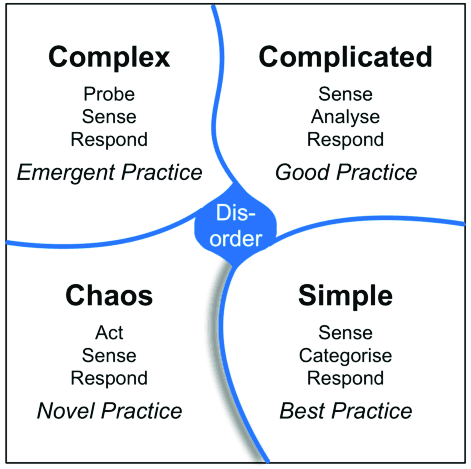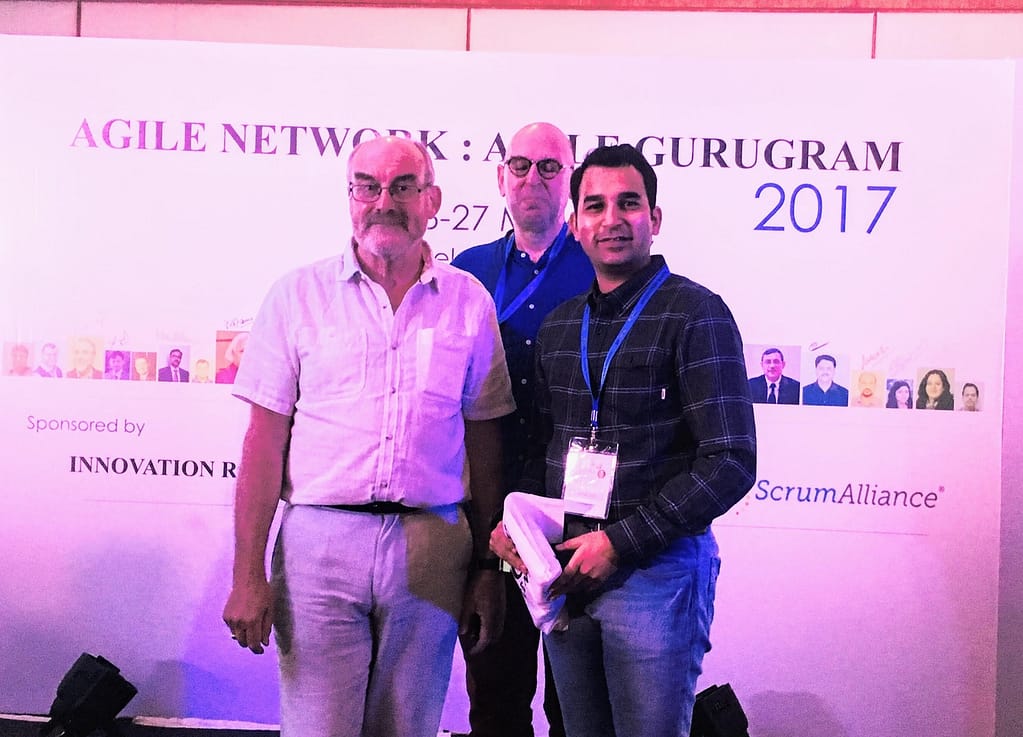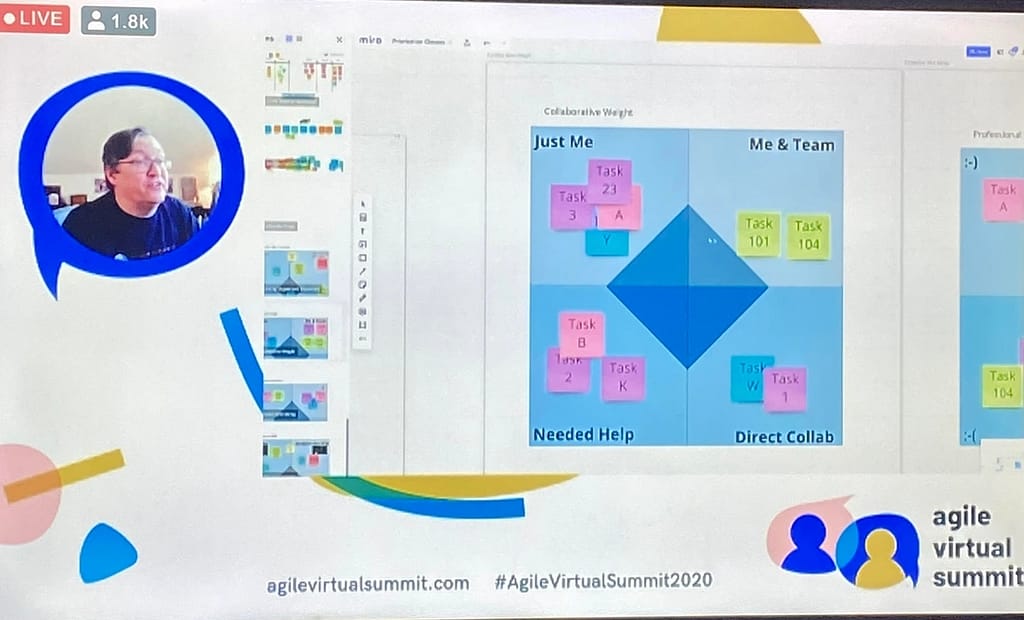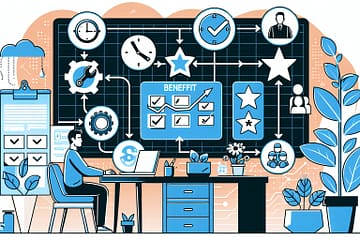Cynefin (pronounced as cunevin) is one of the most popular decision-making framework created by Dave Snowden during his tenure at IBM in 1999. Cynefin is a Welsh word for habitat. It was popularly known as a “sense-making device” for managers so that they can make better decisions by identifying how they perceive any situation and then making sense of their own and other people’s behaviour. It has five decision-making domains, namely:
- Simple (recently renamed to Obvious)
- Complicated
- Complex
- Chaos
- Disorder
I learned about the Cynefin Framework first time when I attended a popular conference Agile Gurugram in 2017 organized in Delhi NCR, where Dave Snowden himself was delivering a keynote.

I can easily recall how Dave explained the framework using the general science for the states of water –
“A system complexity can be measured as states of solid, liquid, and gas each being depicted by a situation that is either ordered, complex, or chaotic.”
Dave Snowden
Though the framework inspired me, I never used it practically until 2019 when I got a managerial position and started feeling the heat of maintaining track of things. Funny enough, I got reminded of using Cynefin when I was clearing my gadget corner and stumbled upon a pair of headphones. Agile Gurugram awarded me for being most active on social media, creating a buzz for the event, and I received it from none other (any guesses?) Dave Snowden during the event closing.

Before I walk you through how I use the Cynefin framework, allow me to shed more light on each state so that you can identify the situation in your teams/projects to quantify your case. As a next step, we will analyze the cause-and-effect relationship for each domain with a suitable approach as I do use my Trello board.
1. Obvious
The Simple or Obvious represents the domain of clarity where you know if you X, then you will get the result Y ensuring that the relationship between cause and effect is pretty clear. Such a situation can be quickly deemed as a status-quo, demonstrating stability and no surprises at all. The approach that you can follow here is “Sense – Categorize – Respond” to some obvious decisions or better termed as best practices at your team or organizational level.
However, one has to be mindful of not oversimplifying the decisions owing to complacency when you get good results regularly for all the choices you took recently. I usually try to make sure that team members are pro-active in raising a possible red flag they see during a simple task on hand, avoiding any negative impacts on the already running application.
2. Complicated
Complicated is an eminent domain for problems that might have multiple solutions, but there is uncertainty about which solution would give the desired results. The cause and effect relationship of such issues might not be identifiable by everyone in the team as the problem is, well, complicated. The suggested plan of action here should be to assess the situation, analyze what could give the best results often with the assistance of SMEs and then execute an action plan or in simple words “Sense – Analyze – Respond”
In my personal experience, I have learned that one should avoid spiralling down with all the recommendations made by experts and ensure that you hear from the whole room first. Such a mindset will not just enable you to sense the best possible decision but also get the team into an agreement for executing the plan of action.
3. Complex
There are times when it becomes almost impossible to pin down the correct solution owing to the complex nature of a problem where it is even tougher to spot a cause and effect relationship. Complex scenarios are the ones that you generally go with the approach of hit and trial as you are unclear what would work. The suggested approach here will be “Probe – Sense – Respond,” which implies that you go with an experimental input, monitor the patterns of output, and decide on amplifying on toning down the current action plan.
In my professional opinion, I have noticed that complex problems often are the best chances for you and your team to run some Inspect & Adapt cycles. Such iterations will let one agree on either going for a fail-fast approach to consume the learning and keep building on them until you find the right combination. Rather than taking them as blockers, consider them the chance to make the product better. You may end up improving an already existing feature that you thought was working as expected but could have been better with the new emergent solution your team just found.
4. Chaos
The chaotic domain covers the challenges when you cannot find any relationship between the cause and effect, thus making it necessary for you to bring your house to order, providing a stable environment for the team to continue execution. These kinds of issues require first aid to stop the bleeding rather than waiting to notice the patterns or take ideas from experts.
The decision-making approach suggested that the chaotic domain is “Act – Sense – Respond.” Such an approach implies that you have to decide which action can bring some stability to think clearly and get more sense about the situation and than ultimately shifting it from a state of chaos to complex. There is no one-size-fits-all solution here that I would recommend here, but as far as my understanding in such volatile cases is that “chaos” is a transitional state and not a condition that will always stay as-is. Many professionals recommend that you should apply a crisis management technique to come out of state.
5. Disorder
The disordered state is when you are in the area of uncertainty when you cannot identify a state for your current situation, and you don’t have any plan of action for the same. These incidents often occur when you lack supporting data to be able to make any decision or draft to-dos to execute a solution. The suggested way to go about it is to first dissect the problem into smaller issues, which will help you triage the blockers that are stopping you from moving forward.
Once you have broken the problem to a certain granular level, the next step should be to gather more data for it, whether from the internal or external stakeholders. The data will ultimately help guide your way out of the confusion and mitigate the associated risks of taking control of the situation and diffusing the tension surrounding it.
How I use personal kanban
Now that we know what each domain represents in the Cynefin Framework, let me share what my Trello board looks like:

Here’s what I do for the first 30 mins when I switch on my machine:
- First 10 mins: Go over emails and Slack reminders
- Next 10 mins: Note down my action items for the day
- Last 10 mins: Go over my Trello board to remind myself of things and track if any of those are intersection with my day’s to-do list to approach them accordingly
Besides, to keep track of all the activities involving my team, It lets me prepare a feasible plan of action for each item, depending on its state. Rather than being a reactive manager, it helped me become a proactive manager who can understand the gravity of a situation and makes better decisions using a recommended approach.
An e.g., there is a new feature request from a client, which may impact four other features in the product: neither the developer has any solution, nor we could think of something. This situation was Complex, so I suggested a couple of ways we could go about it based on the impact analysis done after discussion with the SME. The developer implemented the first solution, and we tested that lead to resolving most of the requirements leaving a minor impact on a couple of other features. We improvised by taking bits of solution pieces from the second proposed approach and were able to come out with a solution.
Interestingly enough, while I was attending a recent conference, “Agile Virtual Summit 2020”, Jim Benson gave a talk on Personal Kanban. He shared an example he often coaches the teams to start using for each of them to identify which tasks they can do on their own and which are the ones they might need some level of support from the team:

Having such a transparent view of your tasks can save you much time through-
- making the right decision on which are the tasks you can work independently compared to those that may need prior or post-development from one or the other team members
- save many to-and-fros which should have been evident in the initial discussions but were never identified
Key Takeaways:
- Cynefin framework is not a categorization but a decision-making framework for anyone who wants to get a better sense of the situation.
- The apparent state generally suggests one to follow the best practices but remain pro-active to avoid complacency.
- Never decide for complicated problems until you have heard possible solutions from experts and your team members from different backgrounds.
- The complex state will challenge you to learn multiple patterns, and it is just a matter of finding the right combination.
- Chaotic problems should be tackled by a rapid response based on sound judgment backed by historical data
- Breakdown a problem into smaller chunks to be able to gather more data and diffuse the disordered situation


